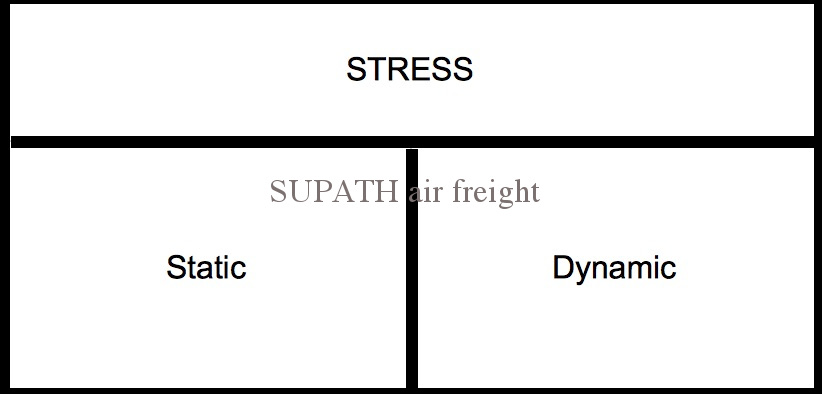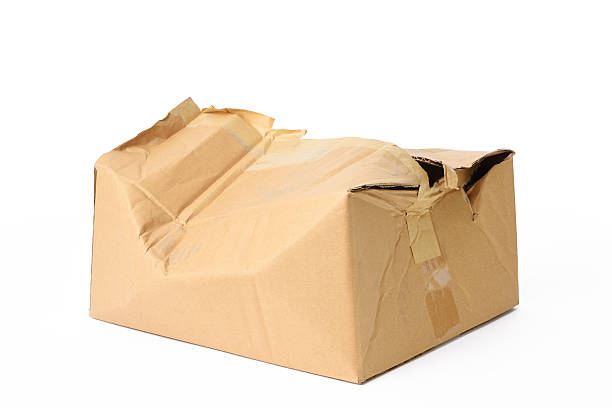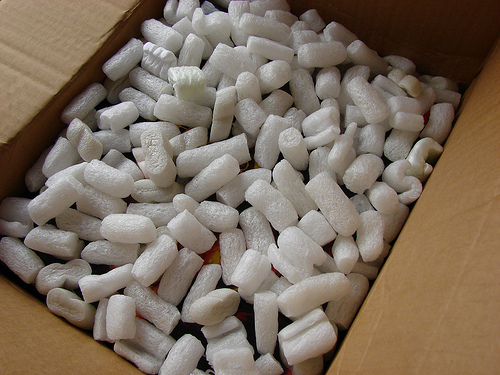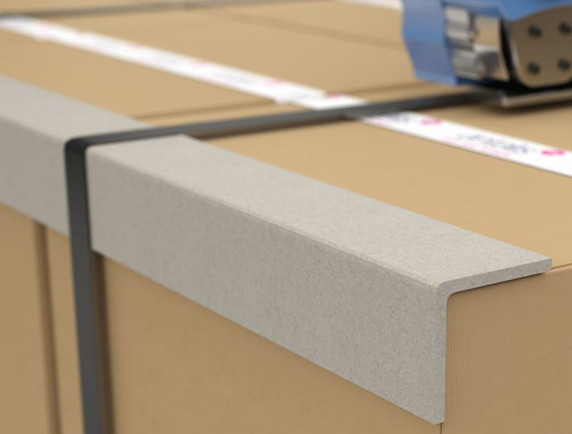Air Freight Packaging Requirements – Introduction
Air cargo packaging requirements fall into three categories: They are safety, resistance and acceptance. Safety deals with the safety of the content. Resistance explains resistance to stress. Acceptance denotes the legal aspect of wood packaging material. Does the packaging material conform to the legal requirements or in short is the material IPPC compliant?
Safety in transport is of primary importance to all the parties involved, either directly or indirectly. This important factor begins with packaging materials and the concept of packaging itself. International air cargo packaging requirements can be simplified. One does not have to be a scientist to ensure the safety of the contents being packaged.
An Important Clarification
As far as possible, I shall avoid technical terms. However, some terms cannot be avoided. This is not a complete reference document. The author cannot take responsibility for decisions taken based on the information provided here. Air freight packaging requirements are many, but only the most important ones are mentioned here.
This documents aims to present the reader with the most important set of information. Professional packaging services are available for specialised freight. Air freight packaging regulations have been set in place by the concerned authorities.
As and where required technical help from experts in the field should be requested. This article aims to help the shipper with practical information. Freight Forwarders involved in global trade, supply chain solutions, can use this article for their customer service. Those who offer cargo consolidation services will find the points here helpful in quickly offering advice to clients.
Air Cargo Packaging – The Guidelines For Air Cargo Consignments
- Sturdiness to withstand rough handling
- Resistant to stress factors: lateral, vertical and horizontal
- Resistant to weather factors : heat, rain, moisture
- Safe against manipulation – air cargo security point. Can items be smuggled into or removed from the package?
- Uniform weight distribution.See article on Floor Load Tolerance
- Temperature Insulation needed?
- “This Side Up” label required?
- Is the content fragile? You need a label showing that
- Wood used? Packaging material, filling (also known as “dunnage”)? Article on wooden packaging material
- If wood is used, is the IPPC Logo visible outside?
- If dangerous goods, use certified packaging and dangerous goods labeling. It is mandatory
- Edge protection for cartons. Prevent straps from cutting into the carton
- Palettes? If content is extremely heavy avoid palettes with chocks (feet)
- Palettes : suitable for forklifts? must be.
- Maximum palette height for air freight : Lower deck (long haul flight) 160 cm
- Cartons on palette : use shrink-wrap.
- Cartons : strong and free from slits.multiple straps to avoid manipulation
- No Bark on wood!
- Wood : Treated? see point 9 above
- Multiple cartons : affix carton numbers, attach content list to individual cartons
Security Factor – Tamper Proof Packaging
Air Freight packaging requirements are not complete without the term tamper proof. Airlines, freight forwarders and even lorry companies (truckers) have the term “secured freight” on the top of their lists.
Tamper Proof Packaging – Mandatory for Air Cargo Shipping
Aviation security officers (government officers) can march in any time, into the warehouse and inspect shipments ready for air transport. Every aspect of security will be considered during inspection. Tamper proof packing is, hence, a mandatory requirement.
Heavy Machinery Usually Not Packaged – Consignment Must be Monitored
Whether shipping heavy equipment or using standard air freight service or even an urgent shipment (time sensitive cargo), the packaging must be tamper proof. Exception :Heavy machinery of more than ten tonnes is usually not packaged.
Air Freight Consolidation – “Not Secured” Consignments Delay Whole Consolidations
Especially in freight consolidation services, secure packaging is important. One package with a packaging that is not safe will hold up the entire consolidation. This will, in turn, increase the transit time.
Primary Question – Is the Consignment Safe From Manipulation?
The primary question is : Is the packaging prone to an entry? The question means, can someone access the contents of the shipment? Are there any slits, holes or any openings?
Can A Foreign Object be Smuggled into the Air Cargo?
A foreign object such as an IED (Improvised Explosive Device) can be smuggled into the package through an opening. If an opening was already present, an entry cannot be noticed. Hence, any package, which has any form of opening will NOT be classified as a safe air freight shipment. In course of time the rules will be applied to ocean freight as well.
Seal All Openings, Apertures, Slits – Any Opening is a Risk
The regulations demand that the openings be sealed. When a shipment is tendered to the airlines for transport, the airline reserves the right to refuse acceptance of the freight, if any such openings are present.
The simplest measure is to package the goods in such a way that no external source cannot access the content.
Stress – In Air Freight Mode of Transport
Goods in transport are subject to various forms of stress. In a broad sense, stress can be classified two main categories

Dynamic stress is caused during movements. This can be :
- Stress due to Impact
- Stress due to various forms of vibration
The content of the shipment must be able to survive any of the forms of stress. This is achieved by having a packaging done which will withstand several factors, thus keeping the content safe and sound.
Some very basic points to be considered are:
- Wobbly content : the content of the packaging can move freely, when the shipment is moved (tilted, pushed, shaken etc.) . Solution: provide additional stuffing/dunnage to prevent the freight from moving.
- Thrust Shock: Any shock from outside (e.g. a hit/ a thrust) can damage the content. If the shipment is “thrown” , the landing can cause damage. Solution: Just as in wobbly content, provide additional dunnage.
- Projection : A carton bigger than the palette underneath. Solution: use a bigger palette. If possible, use a smaller carton.
- Exposed freight: uncovered freight on a palette. An easy case for potential damage. Shrink-wrap alone will not help. Either use an overlapping carton with enough dunnage inside. Sharp edges : Palettes may have short edges. Solution: file the sharp edges
- Palettes without protected chocks (feet) : Very rare case. Almost all palettes available have the chocks covered by long sheets of wood. This helps to distribute the weight of the shipment evenly on the palette. Exposed chocks are risky. Read the article on floor load tolerance.
Stress During Handling – Lifting, Moving, Tipping, Dragging : Points to Note
The shipment will be lifted, moved, set down and probably even dragged. It may be subjected to movements caused by acceleration or deceleration. For example, when the lorry carrying the freight comes to an abrupt stop, the moment might shift the goods forward (lateral stress). A reverse force might propel the item backwards. If the stress caused by such a an impact is transferred to the contents, there is a chance of damage.
Stress due to Vibration – Air Craft Engine Vibration : Padding Needed
In the same way, vibration of the engine will cause loose items to move, thus letting the trapped air to escape, causing a collapse of the top layer. This is especially visible in packaging containing Styrofoam chips. The air escaping from the gaps will cause the chips to restructure themselves and sink, thereby exposing the top of the freight they covered. Air freight packaging requirements demand that the content is protected from almost all possible forms of stress
Stress – Possible Forms or Causes
Each freight is an individual unit and possesses its own strong and weak points. It is advisable for the shipper to formulate his own air freight packaging requirements. Only the shipper knows his wares better and he can draw up a list a of measures to be followed. A few points are mentioned below, according to which a list can be prepared.
Stress caused by Impact: Vertical Force

- Vertical fall, or free fall: Consignment falling from the lorry, from the forklift
- Tipping: Piece is tilted resulting in the object tipping of the side
- Bumping: Other pieces bump into the piece or while hoisting or setting down
- Tumbling: Careless placed shipment rolls over the edge of the surface
- Crushing : weight of the top-load crushes the package beneath
Stress Caused by Impact: Horizontal Force
- Jolt caused by acceleration of the transport vehicle
- Bumping into the side of the lorry when the latter navigates a curve
- Other cargo bumping in when the lorry goes up a gradient.
Stress Caused by Vibration, Plunging and Upward movements
- Stress caused by the vibration of the engine
- vertical force acting on the freight due to movement of the vehicle: plunging, rising
- Horizontal impact: Forward acceleration, reverse movements
- Vertical impact : upward acceleration: take off, landing, lowering, lifts etc
- Lateral impact : Impact caused by sideways movements: banking port ward and leeward
Prevention Is Better Than Cure
Air freight packaging requirements are put in place not only to avoid foreseeable risks but also to prevent incidents of damage that would cause unnecessary processing time with insurance cases.
Packaging Material – A repetition
If you are using wood, please read the article on wooden packaging! You should keep yourself up to date on ISPM 15 (https://en.wikipedia.org/wiki/ISPM_15).
Manufacturers of Wood Packaging Materials (WPM) in the US and outside may look up the Electronic Code of Federal Regulations (e-CFR) for details.
Temperature Sensitive Freight – Insulation Packaging Requirement
Most of the aircraft have temperature regulations in place. It is your responsibility to use a packaging that is well insulated to avoid any damage resulting from temperature temperature fluctuation. If the content is to be protected from frost, an extra label to that effect must be affixed to the outside of the shipment.
Waterproofing – Can Moisture Damage the Content?
Waterproofing is not a must, However, precautionary measures are never a bad decision. If the content cannot be damaged by moisture or by water, no extra steps are needed.
Dangerous Goods – Only Certified Packaging Materials Permitted
Dangerous goods packaging must be fully compliant to the standards set by the IATA. The current copy of the Dangerous Goods Regulation should be available for reference. For shippers in the US : Information on the website of the Federal Aviation Administration on packaging your dangerous goods.
Always use sturdy materials. As mentioned above the shipment will be subjected to stress and the packaging must be able to withstand almost all of them. The same applies to the content of the goods.
If cartons are used, see that the flaps at the bottom are secured by adhesive tape. The inside floor should be reinforced by a protective board or shock absorbent material layer.
A Word About Polystyrene Chips
Experience has taught me to not encourage the use of polystyrene chips. If you really prefer to use them, it is advisable to fill the packaging with the chips and then subject the shipment to vibration (shaking, tilting, jolting) to displace the air between the chips. This will expose the top of the packaging so that more chips can be used to cover the exposed section.
 Courtesy; yum9me
Courtesy; yum9me
Bubble-Wrap aka Blister-Wrap
Blister-wrap (bubble wrap) is a good but expensive alternative. Combine the materials as you wish. Always better to test packaging before actually implementing them. Your air freight packaging requirements must be tailor-made to your needs and products. The goal is to avoid any kind of damage.
Palettes
Smooth sharp edges (of palettes). Avoid using metal under the chocks (feet of the palette). Metal against metal is not permissible in air freight transport. Avoid using palettes with exposed chocks. Always use palettes that have the chocks covered by strips to give an even running lower side.
Metal against metal is not permissible in air freight transport.
Heavy Engineering Goods
Shipments of more than ten tonnes may not be packaged. The airline will give you instructions on what is to be done. Sufficient space must be available under the shipment for a wooden floor which will be mounted on the air freight palette (also called ULD = Unit Load Device).
Protect the bottom of the shipment with proper earthing as the load will be placed on a protective plastic sheet (static electricity) .Stress Caused By Vibration – A Note For Sensitive Equipment
Heavy Engineering Goods – A Few Points to Note
Some of the major points to note for shipping heavy engineering goods
- wooden beams under the freight. However, pay attention to the height. Your airline will advise you. Preferably keep the height to below 250cm (Boeing 777 freighters have an inward bulge in the fuselage that limits loadability of cargo. Cargo of up to 15 tonnes might be moveable by heavy duty forklifts. Hence, there should be room beneath the freight to permit the insertion of the forks.
- provide strong hook or roping rings on the sides for lifting (needed for cranes and gantry cranes)
- Remove or restrain movable parts. Nothing may move. A moving part is a pre-programmed risk of damage
- insulate all exposed electrical connections.
- Declare any batteries used. Especially Lithium batteries. They need appropriate labels. If possible remove them.
- Remove any liquids from containers in the equipment. If possible remove the container itself. traces of liquids might be dangerous or classified as dangerous.
- Empty any pressure containers that keep air or gases under pressure. Better to remove such containers.
- provide padding to any sharp edges.
If you classify your shipment as sensitive to vibrations, you should inform your packaging company to use materials that insulate the contents from strong vibrations. Your list of air freight packaging requirements must mention that packaging materials should be able to withstand and protect the contents from vibrations levels which can reach up to 500 Hz.
Air Freight Packaging Requirements for Oversize Freight – Very Long And Heavy Pieces
Shipments are secured to tie down slots on the floor of the aircraft. Strong belts (lashes) are used to secure the freight. The air freight palettes and ULDs (Unit Load Devices) are locked in place using the locking down slots on the aircraft floor. Providing rings or hooks along the length of the freight will help the loading staff to save time and also give your freight that extra amount of security.
Oversized Cargo – Provide Fastening Possibilities
Oversized shipments might occupy more than one position. A position means, to put it simply, the space needed for one unit load device. Take for example, a cylindrical shipment of 400 cm length. This will occupy the length of one full unit load device and also space on the next ULD. The packaging must be done with the lashing (the belts that secure the freight to the floor of the aircraft) in mind. Provide enough layering to withstand the pressure applied by the fastening.
Requirements For Temperature Sensitive Shipments
Is your freight temperature sensitive? You must mention it on your SLI (Shipper’s Letter of Instructions). If your freight does not need “active cooling” during the flight, but should be kept within a certain temperature range (usually between 2°C and 8°C), no cool container (also called Envirotainer) is needed. The freight will still be transported within the temperature limits. If you are using dry ice, please pay attention to the transit time. The amount of dry ice should last the time taken for transport to the airport, the warehouse waiting time, the flight duration, the storage time at the airport of destination. The freight forwarder should be notified about the amount of dry ice.
Active cooling
A container is used to keep the freight cool. The temperature can be regulated and the freight is loaded. The freight will, inadvertently, come into contact with ambient temperature, when it will be removed from the container. Hence, the packaging must have sufficient insulation.
However, if the flight needs to go through transit, the hold will be opened to remove the freight required for the stop over destination. This will cause a sudden change in the ambient temperature within the hold. Hence, include special insulation in your list of requirements. Do not use ice packs in the freight! The ice will melt and damage the packaging leading to suspicion
Packaging Requirements For Temperature Controlled Freight – Passive Cooling
Passive cooling means no temperature controlled container is used. Cooling is done by the type of packaging used. An insulated carton can keep the outside temperature (ambient temperature) from reaching the content. Cooling gel or similar material is inserted into the carton to keep the content at the required temperature. Dry ice, too, may be used for cooling. Please avoid using ice packs. The ice will melt and the package will become moist. That could result in the packet being rejected by the airline.
Please avoid using ice packs. The ice will melt and the package will become moist. That could result in the packet being rejected by the airline.
Passive Cooling – Only on Direct Flights. Not for Transit
Passive cooling is to be used only for freight booked on direct flights. When a transit is involved, there will a lay off time for freight before it goes on to the connecting flight.
Hence, consider, how long the cool packs or gel packs can keep the content cool. Never use air freight consolidation services for transporting temperature sensitive freight.
Additional note for temperature controlled shipments flown using envirotainer containers (RKN): If you shrink-wrap your shipment, remember to leave the bottom of the palette open. If you cover the bottom of the palette with the shrink-wrap film, the cooled air will be blocked from circulating around the consignment..
Cartons On Palettes
Cartons on palettes must be secured using strong steel or plastic straps. Use a contour protection (angular hard board prtectors) to prevent the straps from cutting through the carton. Straps cutting through the cartons might cause the freight to be classified as “in danger of manipulation”. If this happens, the consignment will have to be “made secure” after inspection. This means the slits need to be sealed and secured against any possible manipulation. Air freight safety regulations are very stringent.

An Advice Oft Repeated
All small shipments, booked on long haul flights, save time, energy and cost if kept below the 160 cm limit. Anything above the 160 cm height limit needs a freighter. For a variety of destinations, it is safe to keep the freight below 110 cm (Aircraft: A319 and A320).
All small shipments that need to be re-loaded on the connecting flights should be below the 160 cm limit. However, there are a lot of destinations, to which only “narrow body” aircraft operate. For example if the connecting flight is a B757 (Boeing 757) the height of the freight may not exceed 70 cm and a weight of maximum 150 kg per piece (some airlines may demand a lesser weight per piece).
Note
Well, I do understand if some of you might not fully understand certain terms. Please post your doubts and queries and I shall gladly answer them.
